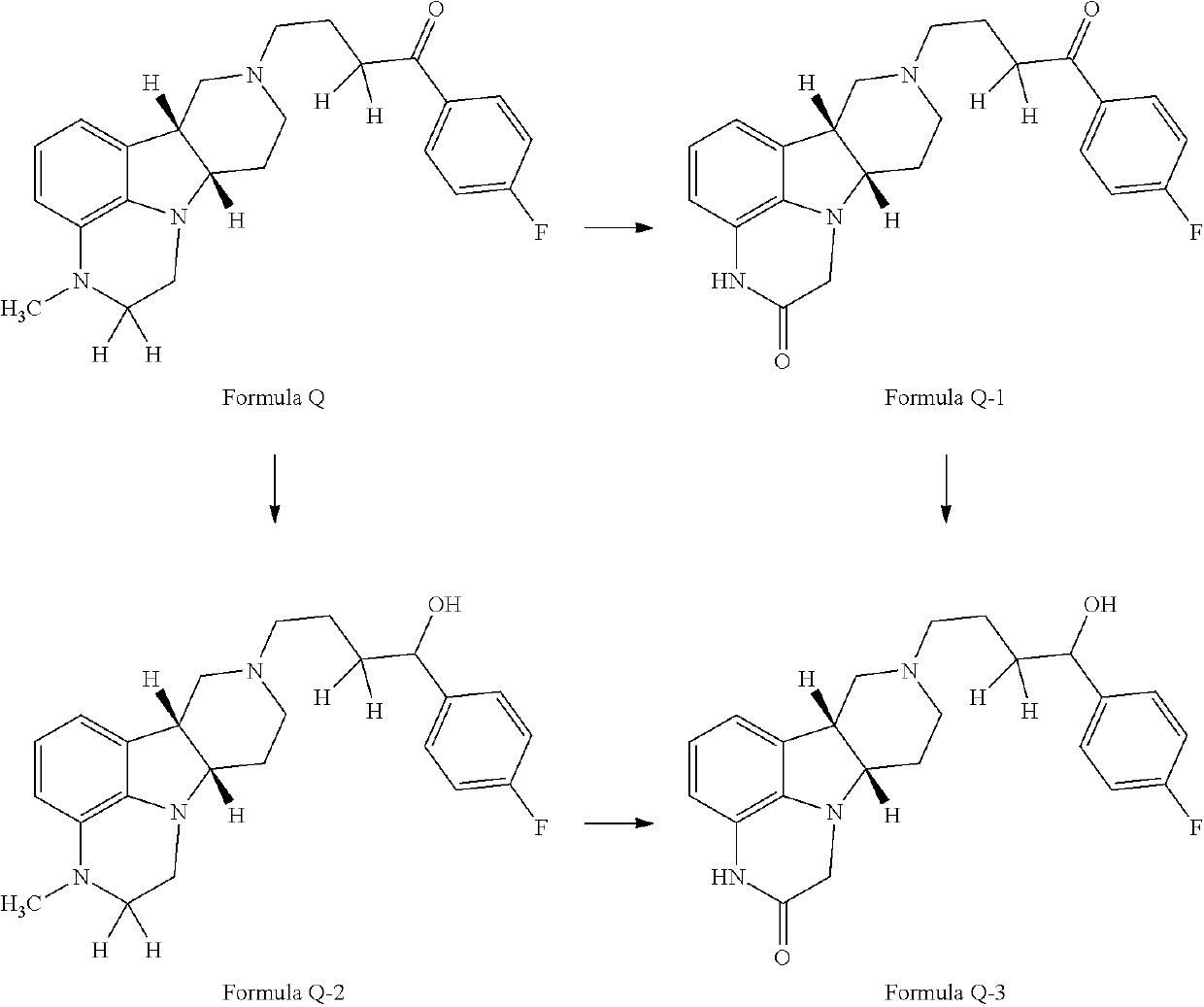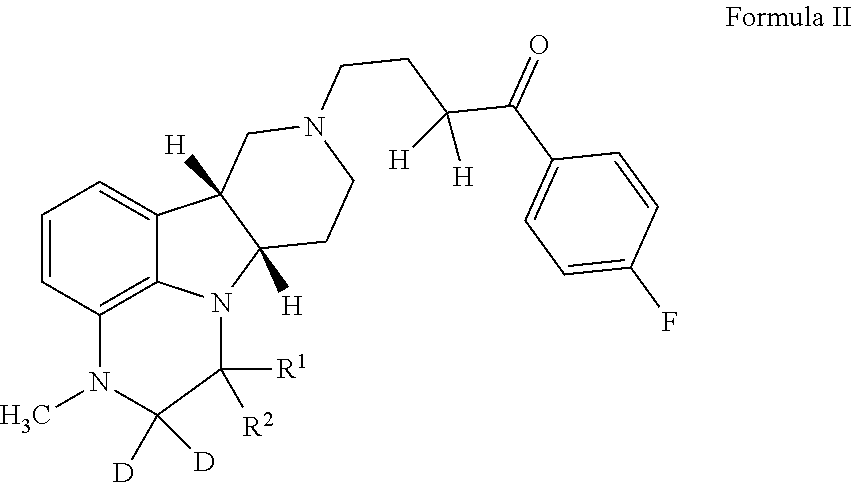Organic compounds
a technology of gammacarbolines and deuterium heterocycles, applied in the field of deuterium heterocycle fused gammacarbolines, can solve the problems of difficult to predict with certainty the effects of simultaneous deuterium substitution, additive (synergistic) improvement of metabolic stability, etc., to achieve the effect of effective treatment of 5-ht2a, enhancing the therapeutic activity of combined agents, and reducing or minimizing side effects
- Summary
- Abstract
- Description
- Claims
- Application Information
AI Technical Summary
Benefits of technology
Problems solved by technology
Method used
Image
Examples
example 1
1-(4-fluorophenyl)-4-((6bR,10aS)-1,1,2,2-tetradeuterio-3-methyl-2,3,6b,7,10,10a-hexahydro-1H-pyrido[3′,4′:4,5]pyrrolo[1,2,3-de]quinoxalin-8(9H)-yObutan-1-one p-toluenesulfonate
[0206]
[0207]Step 1: To a degassed mixture of (4aS,9bR)-ethyl 6-bromo-3,4,4a,5-tetrahydro-1H-pyrido[4,3-b]indole-2(9bH)-carboxylate (1.60 g, 8.0 mmol), 2-chloro-2,2-dideuterio-N-methylacetamide (1.74 g, 16 mmol), and KI (2.68 g, 16 mmol) in dioxane (28 mL), diisopropylethylamine (2.8 mL, 16 mmol) is added at room temperature. The reaction mixture is then heated to 104° C. under vigorous stirring for 20 h. Solvents are removed under vacuum and the residue is suspended in dichloromethane (50 mL) and extracted with water (20 mL). The organic phase is separated, dried over K2CO3 and concentrated to a residue. The product is purified by silica gel column chromatography using a gradient of 0-100% mixed solvents [ethyl acetate / methanol (10:1 v / v)] in ethyl acetate to yield (4aS,9bR)-ethyl 6-bromo-5-(1,1-dideuterio-2-(...
example 2
Measurement of Parent and Metabolite Levels in Mice
[0213]The compound of Example 1 and the compound of Formula Q are co-dosed in mice (n=3), and the levels of the both compounds are studied. Procedures for the synthesis of the compound of Formula Q can be found in WO 2008 / 112280. After single dose oral administration of the test compounds, plasma and brain levels are measured at 0.25, 0.5, 1, 2, and 4 hours. The mean values for maximum concentration, time to maximum concentration, and Area Under the Curve (AUC) for both compounds is determined. The results are summarized in Table 1 below.
Plasma(ng / mL)Brain(ng / g)Time (hr)F. QEx. 1F. QEx. 10.2528.230.4228.3238.00.534.938.1383.7402.4111.011.637.939.4229.931.465.667.7416.316.858.862.1Tmax (hr)0.50.50.50.5Cmax (ng / mL)34.938.1383.7402.4AUC (ng · hr / mL)89.594.5386.6403.6
[0214]It is found that the both plasma and blood concentrations of the compound of Example 1 are higher than the compound of Formula Q, resulting in both higher Cmax values...
PUM
| Property | Measurement | Unit |
|---|---|---|
| weight-average molecular weight | aaaaa | aaaaa |
| weight-average molecular weight | aaaaa | aaaaa |
| temperature | aaaaa | aaaaa |
Abstract
Description
Claims
Application Information
 Login to View More
Login to View More - R&D
- Intellectual Property
- Life Sciences
- Materials
- Tech Scout
- Unparalleled Data Quality
- Higher Quality Content
- 60% Fewer Hallucinations
Browse by: Latest US Patents, China's latest patents, Technical Efficacy Thesaurus, Application Domain, Technology Topic, Popular Technical Reports.
© 2025 PatSnap. All rights reserved.Legal|Privacy policy|Modern Slavery Act Transparency Statement|Sitemap|About US| Contact US: help@patsnap.com



